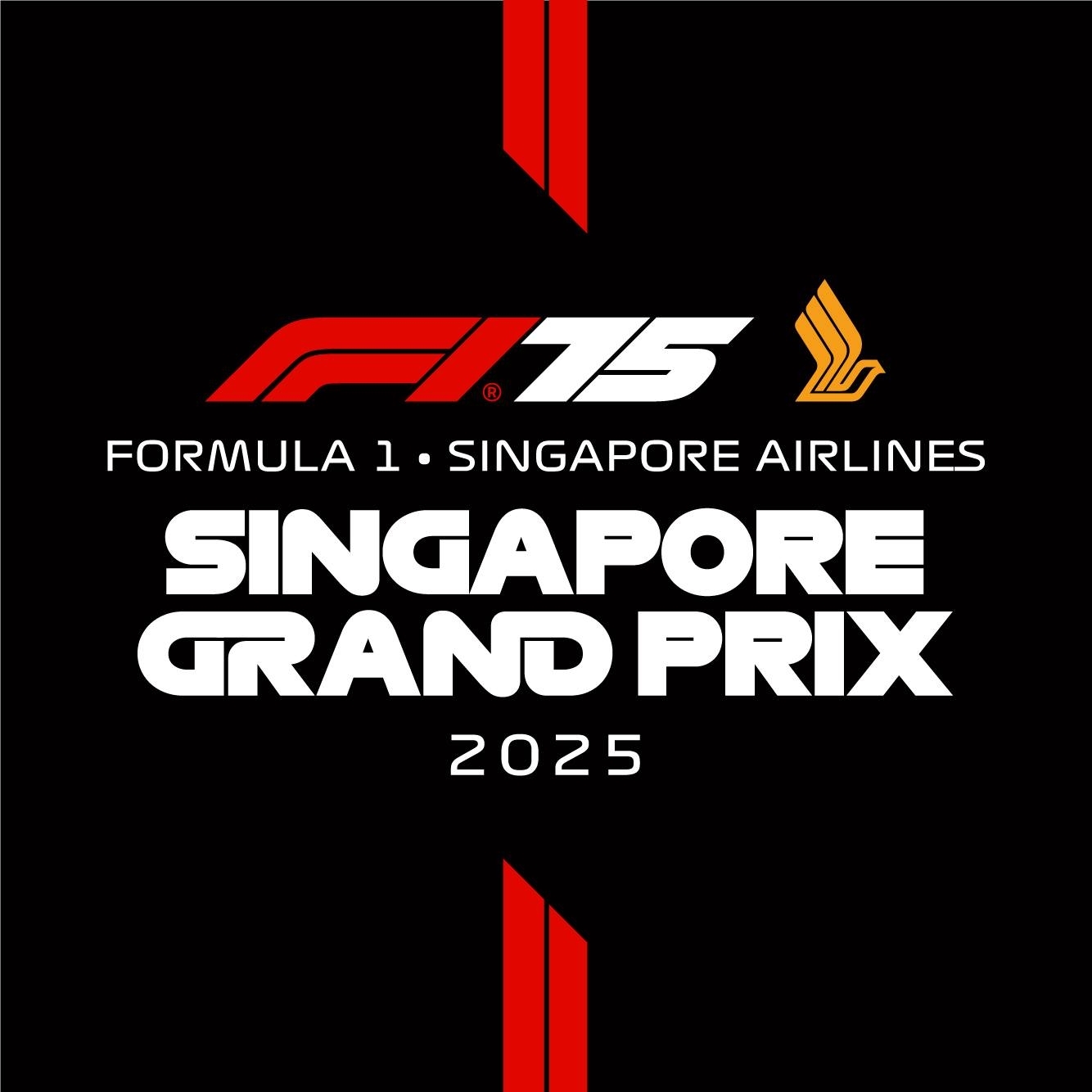
Formula 1 Singapore Airlines Singapore Grand Prix 2025
Contents
- Formula 1 Singapore Airlines Singapore Grand Prix 2025
- Where Will the Formula 1 Singapore Airlines Singapore Grand Prix 2025 Be Held?
- Which Teams and Drivers Will Take Part in the Formula 1 Singapore Airlines Singapore Grand Prix 2025?
- Features of the Formula 1 Singapore Airlines Singapore Grand Prix 2025
- Who’ll Win the Formula 1 Singapore Airlines Singapore Grand Prix 2025?
- Pros and Cons of Traditional Format vs. Sprint Format in Formula 1
- FAQs
Recomended bookmakers
The Formula 1 Singapore Airlines Singapore Grand Prix 2025 is part of the 2025 FIA Formula One World Championship, an ongoing motor racing championship for Formula One cars, and the 76th running of the Formula One World Championship. The race weekend is from October 3 to 5, 2025, with the main race on Sunday, October 5, 2025.
The Formula 1 Singapore Airlines Singapore Grand Prix 2025 promoter is Singapore GP Pte Ltd. Ong Beng Seng, a Malaysian billionaire businessman based in Singapore, is the key promoter behind it. The organizer of the race itself is the Fédération Internationale de l’Automobile (FIA) in collaboration with Formula One Management (FOM).
Where Will the Formula 1 Singapore Airlines Singapore Grand Prix 2025 Be Held?
The circuit is the Marina Bay Street Circuit in Singapore. It’s a street harborside circuit (temporary roads in the city centre) around Marina Bay. The track length is about 4.940 km per lap. The number of laps to drive under lights at night is 62.
In Formula 1, for a Grand Prix event, there are 10 teams, each fielding two cars/drivers — so 20 drivers total. There isn’t a publicly disclosed “prize pool” per race in the way some other sports have. Instead, Formula 1 teams earn money through a combination of race winnings, championship constructor points, historical bonuses, and revenues from commercial rights (TV, sponsorship, etc.). The distribution of money to the teams is done at the end of the season, largely based on their standing in the Constructors’ Championship plus other factors like legacy payments, etc. If we take last season as a parameter, the “winner’s prize” for a single GP might be on the order of US$8-11 million, to the winning team, in the very best scenario. But that’s more of a calculation than a fact.
Which Teams and Drivers Will Take Part in the Formula 1 Singapore Airlines Singapore Grand Prix 2025?
The confirmed 2025 grid (following late driver swaps) includes:
- Red Bull Racing – Max Verstappen, Yuki Tsunoda
- Mercedes-AMG Petronas – George Russell, Kimi Antonelli
- Ferrari – Charles Leclerc, Lewis Hamilton
- McLaren – Oscar Piastri, Lando Norris
- Aston Martin – Lance Stroll, Fernando Alonso,
- Alpine – Pierre Gasly, Marco Colapinto
- Williams – Alex Albon, Carlos Sainz
- Racing Bulls – Liam Lawson, Isack Hadjar
- Kick Sauber – Nico Hülkenberg, Gabriel Bortoleto
- Haas – Esteban Ocon, Oliver Bearman
Unlike knockout tournaments, F1 teams don’t need to “qualify” for individual races like Singapore. Teams/constructors are granted entry by holding a place in the official FIA Formula One World Championship. Only 10 teams currently have entries under the Concorde Agreement. The “qualifying” here refers to the Saturday (if Sprint isn’t included, and here it is), timed session that decides the starting grid — not entry to the event itself.
Features of the Formula 1 Singapore Airlines Singapore Grand Prix 2025
Here’s how the Formula 1 qualifying format works for the Formula 1 Singapore Airlines Singapore Grand Prix 2025. By the way, for the first time, Singapore is scheduled as a Sprint weekend in 2025, so the “traditional” format no longer applies:
Sprint weekend format (per the latest FIA & F1 rules):
- Friday, October 3, 2025
- Free practice 1 (FP1) – only one practice session.
- Qualifying (Q1–Q3) – sets the grid for Sunday’s main race.
- Saturday, October 4, 2025
- Sprint shootout (SQ1–SQ3) – a shorter qualifying session with reduced time per segment (12 min, 10 min, 8 min).
- Sprint race (≈100 km / ~30 laps in Singapore) – a mini race, no mandatory pit stop, lasting around 30–40 minutes.
- Points awarded: Top 8 finishers (8–7–6–5–4–3–2–1).
- Doesn’t affect the grid for Sunday anymore (that was changed after 2022–23).
- Sunday, October 5, 2025
- Grand Prix (62 laps) – the full race, with standard points (25–18–15… down to one for P10).
To sum up: there will be one less practice session (just FP1), Friday qualifying (not Saturday) sets the Sunday grid, Sprint shootout + Sprint race on Saturday adds extra racing action, and more points available – one instead of 25 max for a win, a driver can now score up to 33 points in a weekend (25 + 8 from Sprint).
Who’ll Win the Formula 1 Singapore Airlines Singapore Grand Prix 2025?
Based on recent form, street-circuit history, and what analysts are saying, Lando Norris (McLaren) is widely viewed as a strong favorite. He’s performed well in Singapore previously, and McLaren has shown competitive pace. Oscar Piastri (also McLaren) is seen as another contender. He’s frequently mentioned in the top tiers in predictions. Max Verstappen can’t be discounted, never. Even if Singapore is tougher for overtaking, Red Bull’s car + driver combo makes them dangerous.
McLaren, of course, is the main constructor favorite here. Ferrari (especially Charles Leclerc) is usually in the conversation for Singapore, particularly given their capability in qualifying or in managing traffic. Others like Mercedes may be less “favorites” but always in the mix, especially depending on how well they adapt to the tight street circuit and autumn conditions (heat, humidity, tyre wear) in Singapore.
Big betting names to visit to bet on the Singapore race include Bet365, William Hill, FanDuel, DraftKings, etc. Plus, given that the country legalized online gambling in 2016, if you find yourself in Singapore during the race, you no longer need to use sports betting sites offshore only. Usual markets are “win” (which driver wins), podium finishes, head-to-head matchups (driver vs driver), fastest lap, pole position, etc. Odds are set based on recent performance, qualifying pace, past Singapore results, and practice/qualifying sessions.
Since its return in 2008 (the event was discontinued after 1973), Singapore has been a night race under lights. That creates high demands for drivers (visibility, heat, humidity), and makes tyre degradation, cooling, and physical fitness extra-important. One significant recent change is that 2025 will be the first time the Singapore GP hosts a Sprint weekend. So there’ll be a 100 km sprint race on Saturday, plus the standard Grand Prix on Sunday. Sprint weekends tend to increase viewership. Singapore joining sprint weekends is in part because of increased fan interest, attendance, and TV audiences.
Sebastian Vettel won the Singapore race more than any other driver. The German was on top five times; three times as a Red Bull member (2011, 2012, and 2013) and twice as a Ferrari member (2015 and 2019).
For many regions, F1 TV (Pro version) will stream live races and qualifying, etc, where available geographically. Apart from that, beIN Sports has rights to broadcast in Singapore, along with Mediacorp Channel 5 (free to air for some sessions) and online stream via MeWATCH. In the USA, ESPN covers F1. In the UK & Ireland, Sky Sports F1 holds rights. And so on.
Pros and Cons of Traditional Format vs. Sprint Format in Formula 1
| Category | Traditional format | Sprint format |
| Pros | More track time for teams and drivers (three practice sessions) Fans get to see longer preparation and setups Simpler to follow (practice → qualifying → race) Qualifying retains Saturday spotlight | Adds extra racing action (Sprint on Saturday) More points available per weekend (up to 33) Increases unpredictability and entertainment Offers a chance for recovery before the main race |
| Cons | Can feel repetitive with too much practice Less competitive action before Sunday Single race means less chance for surprise results | Reduced practice time (only 1 FP) Higher risk of crashes/damage before the main race Can dilute the importance of the Sunday Grand Prix Confusing for casual fans (two qualifying sessions, two races) |






